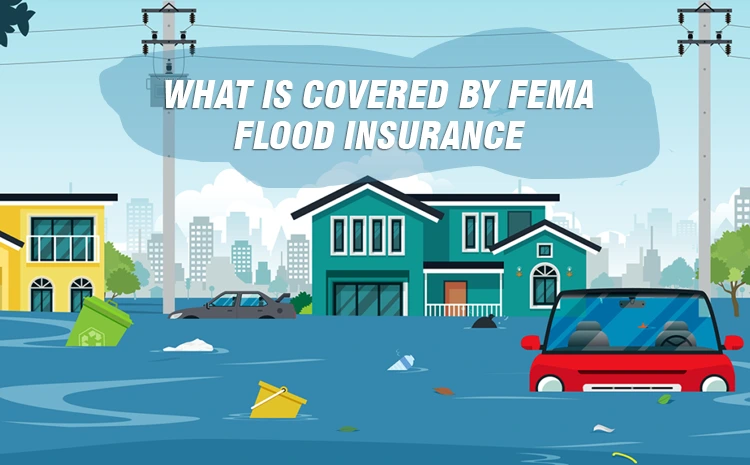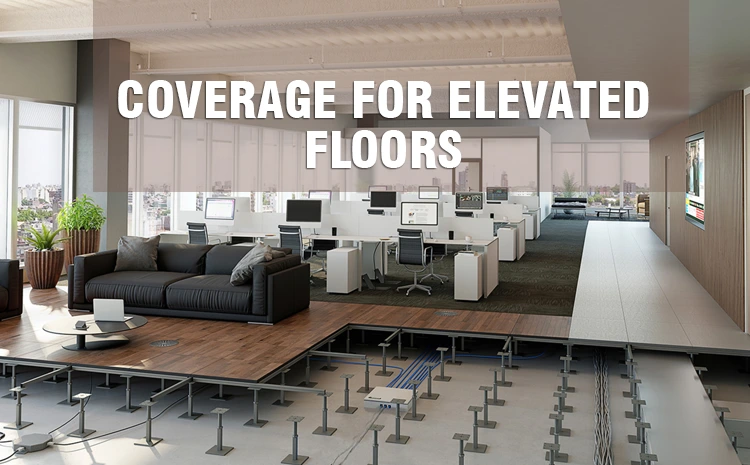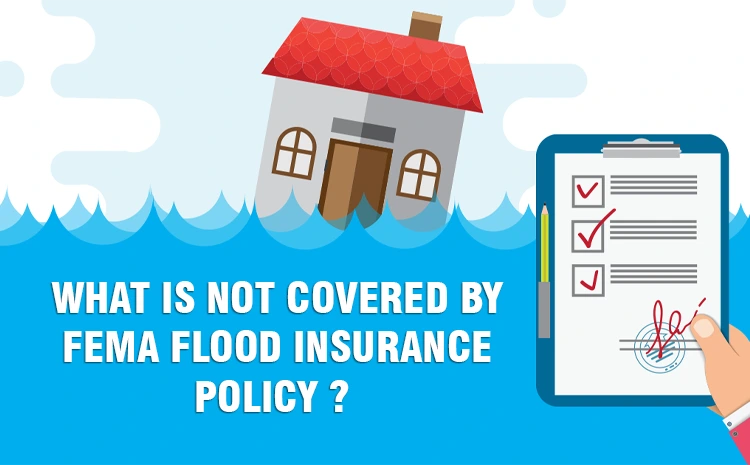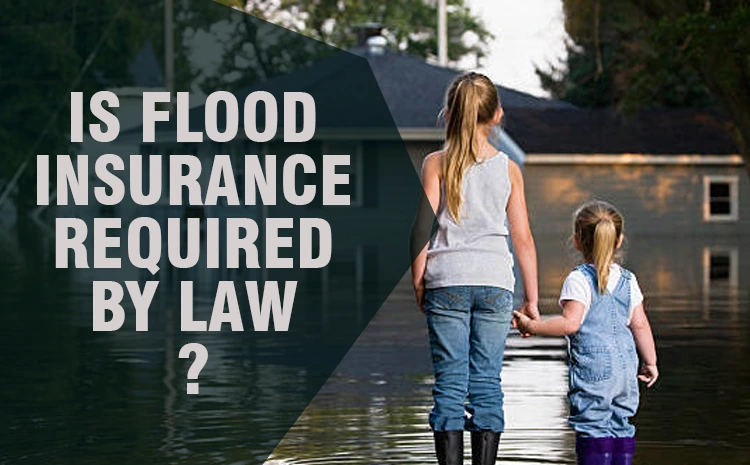
What is Covered by FEMA Flood Insurance? – Insurigo Inc
Are you looking for a comprehensive guide on Flood Insurance? You have landed on the right page. Hurricanes remain a constant threat, as evidenced by recent historic storms. High winds, storm surges, and flooding can cost hundreds of millions of dollars in damage each year. A National Flood Insurance Program (NFIP) coverage is one of the most effective ways to safeguard your house, business, and other insurable property.
Most home insurance policies exclude flood damage, which can cost tens of thousands of dollars even with only an inch or two of water. Unfortunately, extreme weather is becoming more prevalent, and floods have recently hit regions that are not on the coast or near a body of water. That is why you may want to consider purchasing Flood Insurance. Insurigo Inc. is your go-to company for providing unmatched Flood Insurance coverage in Texas and nearby areas. You can trust us to acquire reliable insurance solutions that are tailored to meet your specific needs.
There is always a possibility of flooding in your home. You are never truly safe from nature’s vengeance. Even modest flooding can cause significant damage to your home. In such instances, FEMA Flood Insurance might prove invaluable. It can mean the difference between a full recovery and a financial disaster. In this blog, we will help you understand FEMA Flood Insurance, what it covers, how to buy it, and how much it is.
Understanding FEMA Flood Insurance
Flood Insurance coverage protects your home and belongings from flood-related damage. It is different from a homeowners insurance policy, which typically excludes flood damage caused by hurricanes and excessive rain.
FEMA stands for “Federal Emergency Management Agency”. Since 1979, FEMA has been the Federal Government’s primary agency in reacting to and recovering from many of the nation’s most severe crises. FEMA has based on more than 200 years of federal disaster response experience.
The majority of homeowners obtain Flood Insurance through the National Flood Insurance Program, but you may be able to purchase coverage on the open market. Flood Insurance can address issues like:
- Storm surges
- Inland flooding occurs when rivers and streams overflow during a storm.
- Flash floods
Flood Insurance under the NFIP includes a 30-day waiting period before coverage begins, which means you cannot file a flood insurance claim for damage caused during the waiting period. Some private Flood Insurance firms provide reduced or no waiting periods.
If a flood damages or destroys your home and property, you can claim with your Flood Insurance carrier and receive coverage up to the policy amount. For example, if you had an NFIP policy with $250,000 in-building coverage, you’d be covered up to that limit. Some homeowners obtain private Flood Insurance as an “excess” policy to supplement their existing NFIP policies.
What Does FEMA Flood Insurance Cover?

FEMA Flood Insurance provides two categories of coverage: building and contents (meaning personal property). You can buy either building-only coverage, contents-only coverage, or both.
NFIP Flood Insurance can be further divided into two categories:
- Elevated floors
- Basements, crawlspaces, “walkout basements,” and enclosed ground-level facilities beneath an elevated building are examples of regions below the lowest raised floors
Coverage for elevated floors

NFIP Flood Insurance policies cover the building property (up to $250,000) and include:
- Central air conditioning
- Detached garage
- Electrical systems
- Foundation walls, anchorage systems, and stairs
- Fuel tanks, well-water tanks, and pumps
- furnaces and water heaters
- Permanently installed bookcases, cabinets, and paneling
- Permanently laid carpeting
- Plumbing systems
- Refrigerators, cooking stoves, and built-in appliances (such as dishwashers)
- Solar Energy Equipment
- Window blinds
NFIP Flood Insurance policies Cover contents (up to $100,000), including:
- Personal items, such as clothes, computers, and furniture
- Carpets not covered by building coverage (e.g., carpet placed over wood flooring)
- Curtains
- Microwave Oven
- Portable and window air conditioners
- Valuable objects, such as artwork and furs (up to $2,500)
- Washers and dryers
Coverage in areas below the lowest elevated floor
FEMA Flood Insurance provides limited coverage for buildings and belongings located below the lowest elevated floors, such as a crawl space or basement.
Building basement covering includes items such as:
- Central air conditioners
- Cisterns and the water they contain
- Drywall for Walls and Ceilings
- Electric outlets, switches, and circuit breaker boxes
- Foundation walls, anchorage systems, and staircases related to the building
- Fuel tanks and the fuel they contain
- furnaces, hot water heaters, heat pumps, and sump pumps
- Non-flammable insulation
- Solar Energy Equipment
- Well water tanks and pumps
Basement content Flood Insurance coverage covers stuff as follows:
- Food freezers and the food within them (not refrigerators)
- Portable and window air conditioners
- Washers and dryers
The following things are not insured under building or contents coverage if they are located beneath the lowest elevated floor:
- Bookcases, paneling, and window coverings (such as shades and drapes)
- Carpeting, area carpets, and other floor coverings, such as tiles
- Drywall for Walls and Ceilings
- Non-drywalled walls and ceilings
- Most personal property, such as clothing, technological equipment, kitchen utensils, and furniture
What is not covered by FEMA Flood Insurance Policy?

The National Flood Insurance Program (NFIP) covers damage caused directly by a flood, which is defined as “an excess of water on land that is normally dry, affecting two or more acres of land or two or more properties.”
Water damage caused by issues such as a sewer backup will not be covered unless the backup was directly caused by a flood.
The following items are not covered by FEMA Flood Insurance:
- Cars and most self-propelled vehicles (including their components)
- Currency, precious metals, stock certificates, and other valuable documents
- Financial losses resulting from business interruption
- Personal property stored in basements
- Property outside the insured building, such as landscaping, wells, septic systems, decks and patios, fences, seawalls, hot tubs, and swimming pools
- Temporary accommodation and additional living expenses if you are unable to live in your house due to flood damage
How to Get FEMA Flood Insurance?
If you are a homeowner or renter with a property in a community that participates in the National Flood Insurance Program, you can purchase a FEMA policy. You can ask your insurance agent if your community participates, or look it up in the National Flood Insurance Program Community Status Book.
You cannot buy Flood Insurance directly from the NFIP. You must purchase it from an NFIP-accredited insurance agent or organization. Call your home insurance agent and ask if they can provide a Flood Insurance quotation.
If you are not eligible to acquire Flood Insurance from the NFIP, you may be able to do so through a private insurance provider.
Is Flood Insurance Required by Law?

Whether you live in or outside of a high-risk flood zone, if you own property, you should consider obtaining Flood Insurance for the safety and peace of mind it provides. However, many property owners, particularly those in high-risk flood zones, may be forced to have Flood Insurance.
Homes and businesses in high-risk flood zones with government-backed mortgages must carry Flood Insurance. While Flood Insurance is not officially mandated if you live outside of a high-risk area, your lender may still require it.
How Much is FEMA Flood Insurance?
Flood Insurance costs less than $400 per year for most homeowners in low- to moderate-risk areas. While the average yearly Flood Insurance cost is around $700, residents in flood-prone areas pay significantly more.
Your Flood Insurance cost will vary based on various factors, including:
- Your house’s foundation type
- The framework of your house
- The replacement cost of your home
- Elevation
- Distance to water
- Frequency of different flood types
Conclusion
Exploring Flood Insurance may appear to be overwhelming, but understanding FEMA’s coverage provides clarity. Remember that ordinary homeowner policies leave you vulnerable. From the bricks and mortar of your foundation to cherished belongings such as furniture and electronics, your structure and contents can be protected. However, there are several limits, especially for foundations and detached structures. Keep in mind that proactive planning protects you from financial disaster. FEMA Flood Insurance is an investment in your future, one raincloud at a time. Insurigo Inc. is a prominent company offering reliable Flood Insurance plans in Texas and nearby areas. We employ the best team of expert brokers on board having years of experience in the relevant field. You can rely on our dependable insurance coverage to ensure your property’s safety from floods and hurricanes. Contact us now to make an appointment.
FAQs
Is FEMA the only flood insurance option?
FEMA Flood Insurance is not the sole choice. You may be able to purchase Flood Insurance from a private insurer.
The National Flood Insurance Program covers what types of flood damage?
NFIP Flood Insurance covers water damage caused by a flood, which is defined as “an excess of water on land that is normally dry, affecting two or more acres of land or two or more properties.” Your homeowners’ insurance will cover some water damage, such as that caused by a burst pipe.
Does flood insurance cover mold?
Flood Insurance from the National Flood Insurance Program does not cover mold damage, except in very rare cases, such as when floodwaters persist in the region and prevent you from inspecting and maintaining the residence, or when an authorized official prohibits entry into the area.
Which flood zones require flood insurance?
If you have a federally backed mortgage and live in a high-risk flood area designated as A or V on FEMA flood maps, you must carry Flood Insurance.
Is flood insurance tax deductible?
Flood Insurance, like homeowners insurance, is usually not tax deductible unless you utilize all or part of your home for commercial reasons. However, if your home is damaged in a federally declared disaster flood, you can deduct some expenses that insurance does not cover, even if you do not use your property for business purposes.

